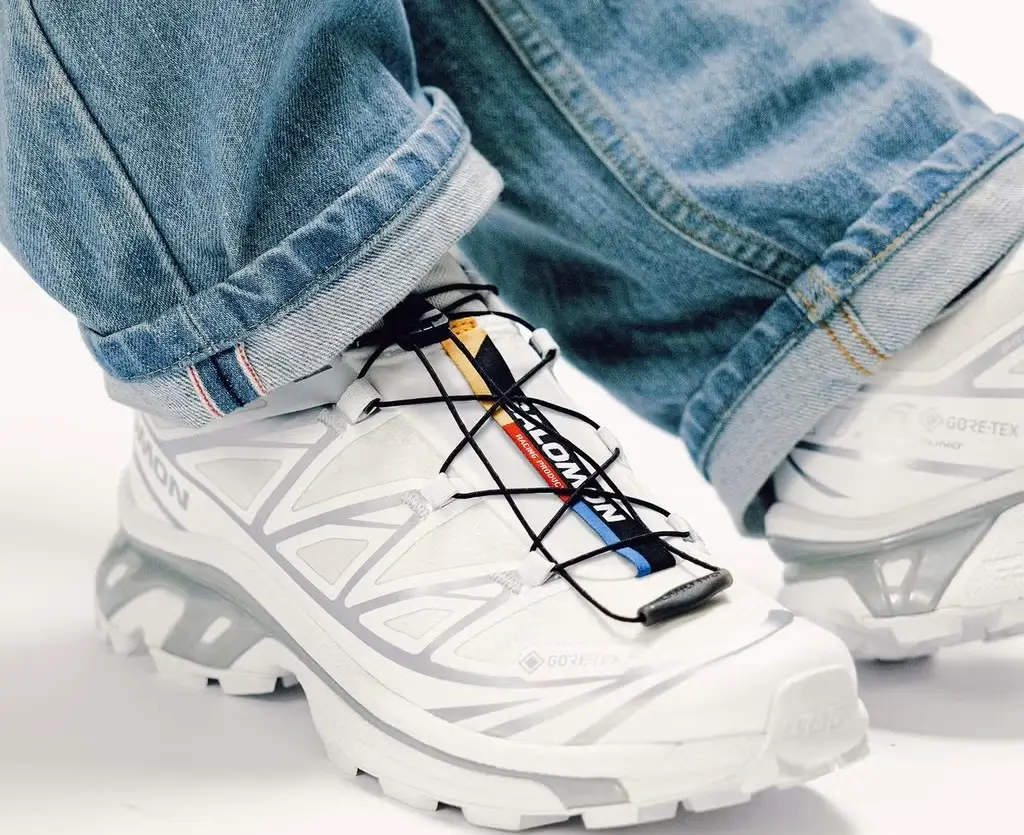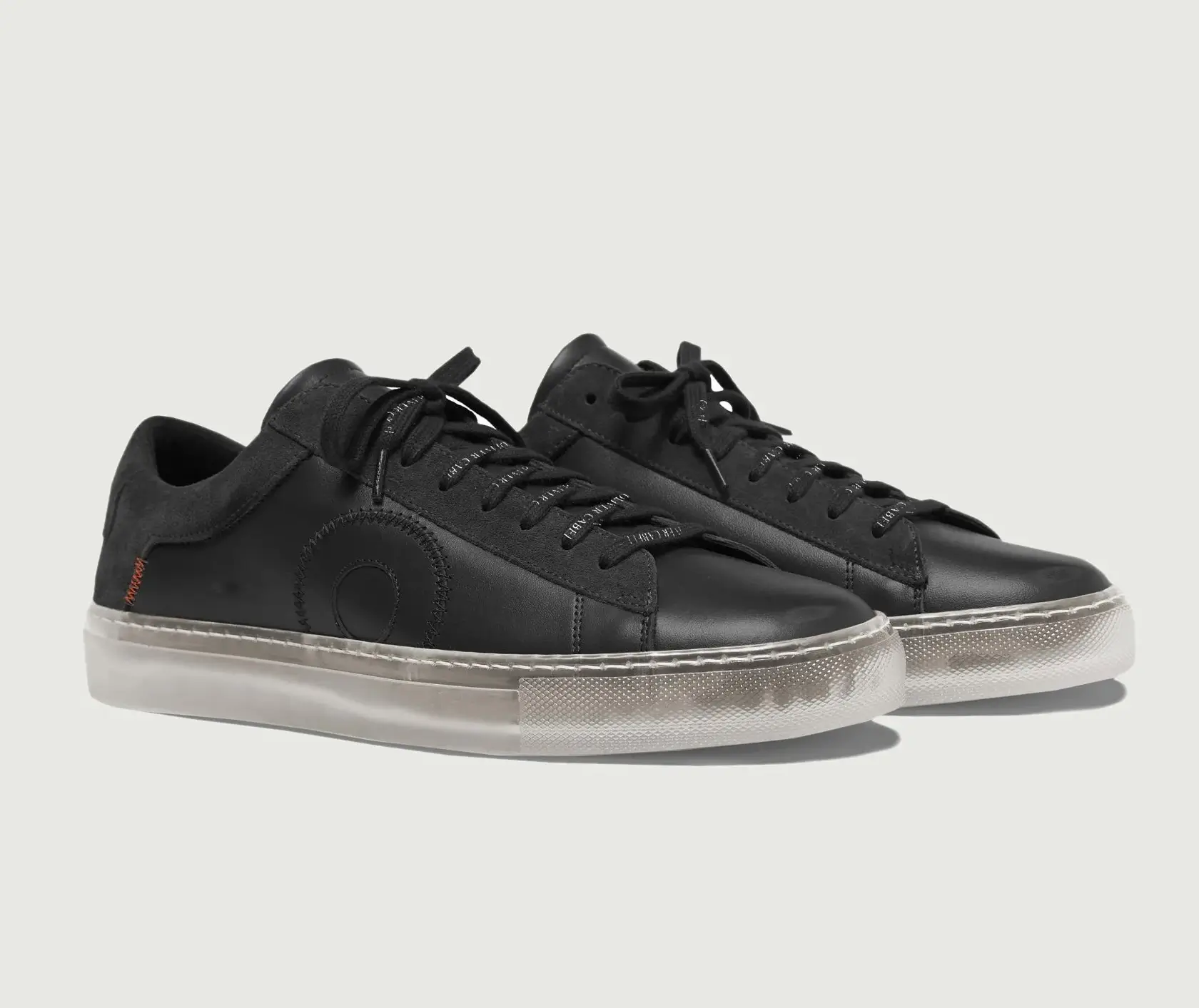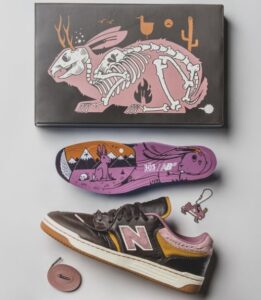Why the world’s most versatile shoe continues to dominate the streetwear scene—one clean colorway at a time.
Some shoes fade into the archive. Others never leave the stage. The Nike Dunk Low “Panda” belongs firmly in the second category. Priced at $115, it’s not just a shoe—it’s a design language, a cultural constant, a wearable icon. On paper, it’s a black and white colorway of a classic basketball silhouette. In real life, it’s a go-to for students, stylists, sneakerheads, and first-time buyers alike. It might be the most democratically loved sneaker of the last five years.
Originally born in 1985 as part of Nike’s “Be True to Your School” campaign, the Dunk was built for college basketball teams. It brought color to the court—and with it, personality. Over time, the Dunk’s life evolved. Skaters picked it up for its grip and structure. Streetwear heads adopted it for its shape and palette. Connectors turned it into a canvas. But not all Dunks are created equal. The “Panda” edition—named for its stark black-and-white blocking—has become its own cultural phenomenon.
At a glance, the Nike Dunk Low “Panda” is simplicity perfected. The shoe uses crisp white leather as the base, layered with deep black overlays. The color blocking is symmetrical, clean, and instantly recognizable. The contrast is bold but not loud. It pairs with everything—jeans, cargos, skirts, dresses, suits. That’s part of its power. The Panda Dunk is as comfortable in a casual outfit as it is in a bespoke fashion editorial.
But the shoe isn’t just about looks. Structurally, it balances vintage DNA with modern comfort. The upper is made from premium leather, finished with a subtle sheen that wears in with age. The perforated toe box keeps things breathable, while the padded low-cut collar provides ankle comfort and a sleek profile. Underfoot, the foam midsole brings lightweight cushioning that adapts to today’s standards of wearability. Add to that the rubber outsole—with its classic pivot circle—and you get traction, durability, and a hit of heritage all at once.
Functionally, the “Panda” works just as well on the street as it once did on the court. But culturally, it has become something even more important: a unifier. In a shoe landscape saturated with collaborations, wild colorways, and ultra-limited drops, the Panda offers clarity. It’s attainable. It’s wearable. And it’s endlessly versatile.
You can’t talk about this sneaker without mentioning its omnipresence. It’s been re-released multiple times since its recent resurgence, and each drop has sold out or come close. Some critics might see this as overexposure. But what it actually signals is endurance. People keep coming back to it—for good reason. The Panda Dunk bridges taste levels and subcultures. It’s on TikTokers and tech workers. On models and musicians. It’s both status symbol and staple.
Part of that success comes from its color story. Black and white is the universal default. But on the Dunk Low silhouette, it becomes graphic and assertive. The shoe feels retro and modern at once. It nods to its 1980s roots while staying completely current. It fits the minimalists and the maximalists. It plays well in any wardrobe. That kind of neutrality is rare in fashion—and even rarer in sneakers.
For collectors, the Panda Dunk is a dependable anchor. For newcomers, it’s a smart entry point into the culture. Unlike hype-laden collaborations or region-locked releases, this is a shoe designed for real-world rotation. Scuffed leather makes it better. A little creasing adds character. You don’t baby this shoe—you live in it.
And Nike knows exactly what it’s doing. While the Dunk ecosystem has expanded to include collaborations, SB versions, and colorway chaos, the Panda has remained steady. It’s part of Nike’s intentional strategy: offer a consistent, affordable, high-demand shoes that’s always just a little hard to get. Not impossible—but elusive enough to keep interest high. It keeps the sneaker relevant without making it feel exclusive.
Even the model number—DD1391-100—has become familiar to resale platforms and sneaker bots. The Panda Dunk is now a recurring figure in the resale market, though its resale price tends to remain relatively stable compared to rarer pairs. That makes it unique again—it holds value without becoming inaccessible. For many, it’s not a flip—it’s a fixture.
There’s something democratic about the Panda Dunk that few shoes can replicate. It doesn’t need celebrity endorsement. It doesn’t rely on nostalgia bait. It’s not limited edition. Its appeal is purely aesthetic and functional. It wears its design on its sleeve—literally. And that design is near flawless. The panels are proportioned just right. The Swoosh sits confidently along the sidewall. The outsole adds visual weight without bulk. Every detail supports the whole.
In a way, the Panda Dunk is a case study in Nike’s long-term mastery: building products that function as both fashion and tool, trend and timelessness. It represents how sportswear becomes streetwear, and how simple design can transcend hype. It’s the kind of sneaker that ends up in closets, not just collections.
Of course, there will always be those who chase the next big drop. The Panda Dunk doesn’t compete with Off-White collabs or Travis Scott exclusives. It doesn’t have to. It exists in its own lane—reliable, wearable, grounded in purpose. And in a culture that often leans toward the extreme, that kind of balance feels revolutionary.
In the end, the Nike Dunk Low “Panda” endures because it resists overstating itself. It’s confident in its clarity. It proves that sometimes, the strongest statement is the simplest one. No gimmicks. No tricks. Just great design, delivered with precision.
No comments yet.









